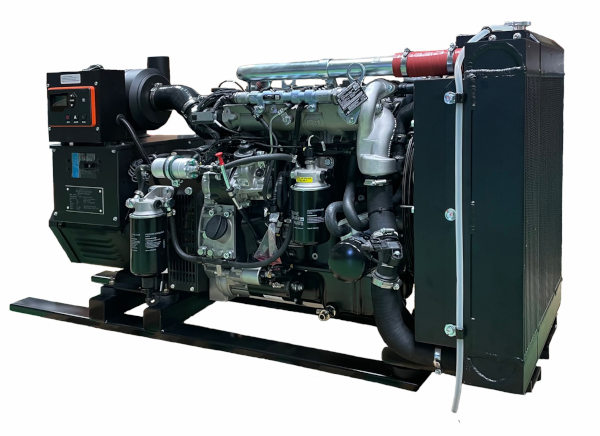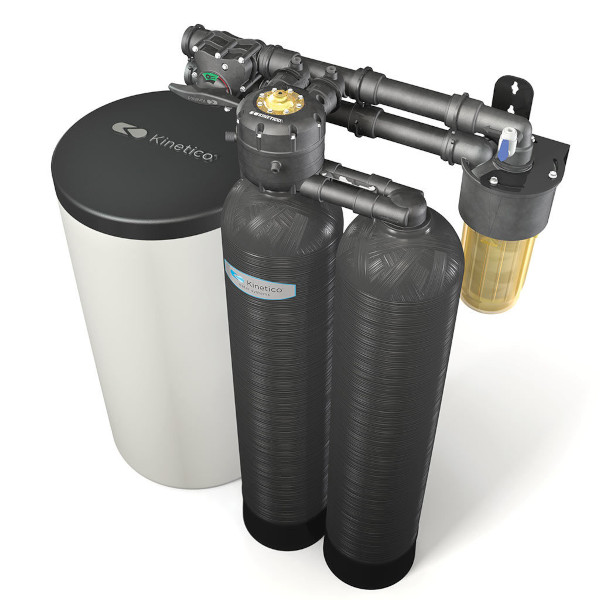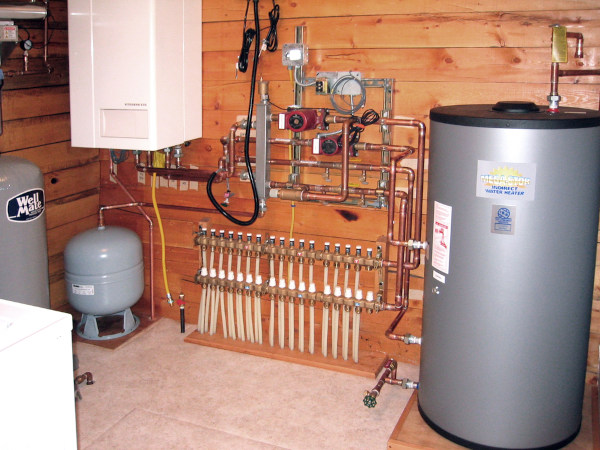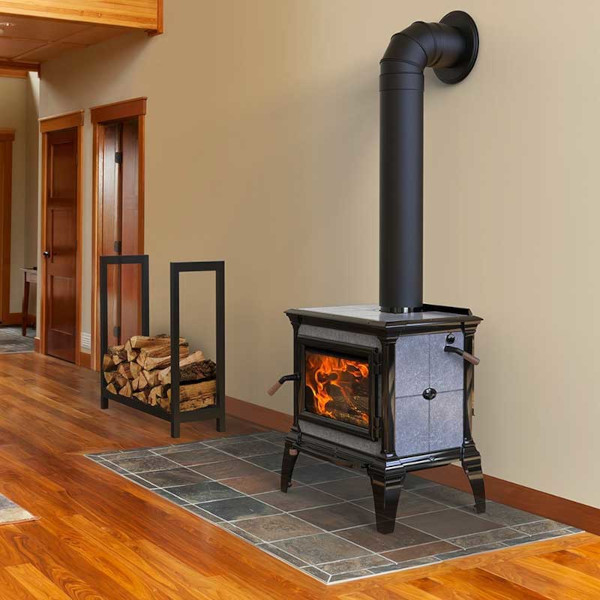Sunday, October 15, 2023
Power
The county requires electrical providers to implement buried underground distribution, i.e. no telephone poles, in residential neighborhoods. This is obviously a response to the fact that the area is heavily wooded, and trees and power lines don't play nicely during stormy weather.

Grid power will be routed from the street to the utility building and from there to the other building(s). My electrical provider will supply all materials and labor to lay the feeders to the utility building free of charge. I will be responsible for all distribution beyond that point. The utility has also indicated that they can provide up to a 400Amp service for no additional cost. The provider indicated the standard cable supplied is direct-burial, but they would pull the cable through some PVC provided I include a pull string.
My ultimate goal is to have each structure (with the possible exception of the utility building, as it is quite small) wired via multiple subpanels that limit the length of home runs to each panel. The panels will eventually be powered by a dedicated hybrid inverter, battery plant, and small string of solar panels to provide continuous power during most typical (short term) power outages. Unfortunately, I lack the budget to do this out of the gate so my plan is to deploy a diesel backup generator and leave appropriate space in each structure's utility room to integrate the inverters and batteries later.
I verified with the electrical provider that they do not buy back excess power generated on site, but they do support net metering i.e. generating sufficient power to run the meter backward and reduce my overall cost. They volunteered that the regional power company (TVA) does buy back power, but the terms are ridiculous -- on the order of 3-4 cents per KWH, which means that my solar buildout will ultimately be limited to that required to keep the batteries fully charged and reduce my power bill (less service charges) to zero.
The perk of using the generator with hybrid inverters is that even if I program the generator controller and transfer switch to wait 5, 10, or even 60 minutes before firing up, the inverters and batteries will continue to provide power during this time. In fact, I'll likely initially size the batteries to provide at least one hour of power at 50% load or 10 minutes at 100% load so the generator only fires up in a worst-case scenario. I should never see the lights so much as flicker during a loss of grid power because of this design and I can save considerable cost as I won't have to shell out for a large solar or battery plant. The generator will also prevent the batteries from fully discharging, and thus considerably prolong their useful lifespan.
Perhaps the best aspect of using a generator to charge batteries, rather than powering loads directly, is the ability to program the battery chargers to dramatically increase the rate of charge, which runs the generator near maximum load only for the time necessary to top off the batteries. If the generator is tied to normal household loads directly the generator is required to run continuously at far less than its maximum load, which can cause issues with a diesel engine in the long run. Diesels like to be run at maximum load and they are most efficient doing so.
The electrical meter will be mounted on the exterior of the utility building or barn as appropriate. As Tennesee has not yet adopted the 2020 National Electrical Code (NEC), no external emergency disconnect is required, and I consider that a blessing. While nothing in the 2020 NEC prevents me from locking the disconnect on, I still consider an external disconnect a security risk and considerable threat to my frozen food stores, as I cannot prevent people from walking onto my property, cutting off the lock, and disconnecting power. While this is an extremely unlikely scenario, I would prefer to be prepared for this possibility than be surprised and defenseless if it happens.
Inside I'll have a main disconnect that will shut off power to the entire property, followed by disconnects that will distribute power to each of the buildings. Each building will have a 30 circuit 150Amp or 40 circuit 200Amp panel, with additional subpanels as required to increase pole space. This configuration will allow me to remotely disconnect and meter the power going to each building and do some simple math to calculate the total consumption for the property.
Water

Despite the property being nearly 2000 feet above mean sea level and 1000 feet above the nearby city of Chattanooga -- or perhaps precisely because it is that high and wells aren't as productive on the mountain as they are near sea level -- water service is provided by the town to my neighborhood. When I walked the property in preparation to make an offer, I spoke with the neighbor across the street. He told me that the water pressure isn't always ideal but it's sufficient. I therefore intend to install a booster pump and a somewhat larger-than-typical pressure tank in the utility building for distribution to the other buildings. If you're wondering why I'd use a large pressure tank, it's for extra holdover time and reduced duty cycle for the pump, which will extend its life considerably.
I am frequently away from home for extended periods of time. My water company states in their service contract that they do not refund anyone for excessive consumption, intentional or otherwise. As a result it is particularly important to detect and stop leaks promptly. It's also very important to characterize consumption, since the water company only provides 1000 gallons under the standard fee every month, as compared to my water company in New Jersey which provides 12000 gallons. On the mountain, I will pay for every gallon above 1000, whether I'm using water intentionally or not.
I plan to install electronically controlled shutoff valves leading to each building that can be triggered manually on site, remotely, or at some point in the future, automatically based on some operational system logic. For example, if the system knows I'm away at work and consumption is above a certain flow threshold or water is continuously flowing for an extended period of time, the affected shutoff valve will be closed to contain the leak and I will be notified of this action.
To address the ongoing cost of the town's water service, I called a couple local well drillers and they said they have drilled productive wells near my property but productivity in this context is dependent on the specific hole they drill. "Water is where we find it", one guy said. Based on their quoted cost per foot plus casing and pump installation, total cost for the well will be the neighborhood of $15K, and that's money I'd rather spend elsewhere initially. So my plan is to go with city water and a booster pump for now and drill a well later if for no other reason than to save money if I start to use a lot more water for agricultural purposes.
One thing I have yet to research is whether I will be allowed to physically connect both the city water source and the well to my primary water manifold that will distribute water to each structure. I'm well aware that backflow prevention would be required in any such installation but this is not really a practical issue -- it's a legal one.
PEX Comparisons and Copper
The water feed from the town will be PEX. Underground between the structures I'll use PEX simply to avoid corrosion but I will probably sleeve them in PVC to reduce the probability of rodent damage. There is a risk in routing the sleeves into the structures because if the PEX does burst it will fill up the sleeve and flood the structures, rather than let the water go more or less harmlessly into the soil, but this can be mitigated somewhat through leak detection. I cannot control the city's section of the water system so I will likely terminate any sleeve for the city's feed outside the building.
If cost were no object I'd use copper pipe for all of my potable water as I believe copper has the fewest downsides, particularly in a southern climate that rarely if ever sees freezing temperatures. Copper is also infinitely recyclable but PEX is not recyclable at all. If I could do the plumbing myself to eliminate the labor cost I'd accept the higher price of copper pipe, but since I can't be on site and am budget constrained in general I will likely be forced to use PEX throughout the project.
This leads to the question -- what type of PEX? My guess right now is I'll specify A.

PEX A seems to have a variety of advantages over PEX B, including a higher rated burst pressure and hence freeze resistance, and corrosion resistant fasteners (i.e. the expansion sleeves are made of PEX rather than metal). The pipe itself has a smaller bend radius (i.e. it can be bent around corners more readily without kinking), and if it does kink it can be repaired with a heat gun. Perhaps the best benefit of PEX A is the fact that as the pipe is stretched over the fittings, the internal diameter and hence the flow of the pipe is not restricted. One downside to PEX A is the expensive expansion tools, but they are a trivial cost for a plumber that installs PEX every day, or even someone building their own home.
Kinks in PEX B cannot be repaired -- the affected section must be physically cut out and repaired with additional fittings. This is a significant concern as PEX B wants to maintain its coiled state and can be more easily kinked as a result if installed aggressively (i.e. the installer forcefully pulls the pipe through the structure as opposed to smoothly pushing it through). PEX B fittings restrict flow, so it is often necessary to upsize the pipe by one size (1/2 to 3/4", for example) to maintain the flow rate expected of the smaller inner diameter. That seems like an easy fix but that can waste a considerable amount of water as the larger pipes hold roughly twice the water volume and it can take a lot longer to deliver hot water from the source. While recent versions of both PEX A and B have good chemical resistance, PEX B seems to win over PEX A in this regard. PEX B is also a lower cost product. Finally, some installers consider PEX B crimp type fittings a greater risk at installation time, as it's not always obvious whether the crimp has been tightened properly, whereas PEX A pipe cannot be physically mated with the fittings unless it is expanded properly.
Hydronic Heating Systems
While living in Zone 4 is a stark contrast from New Jersey in terms of average winter temperatures, because I'm 2000 feet MSL the average temperatures are roughly 10 degrees cooler than at sea level. Based on my research the mountain sees temperatures in the 20s and 30s on occasion in winter so I will need a good heat source at least 3 or 4 months out of the year. Most people in this region appear to use heat pump-based forced air systems to serve both heating and cooling needs, but I'm not a fan of those for a variety of reasons. Hydronic systems are extremely efficient and do not remove moisture from the air, thus reducing an already seasonally low relative humidity, or stir up dust in the home and irritate those with allergies.
As the thermal mass is large and radiates efficiently, I have noticed that in buildings equipped with hydronic heating systems the thermostat can be set lower than what would be considered normal with a forced air heating system. My brother's building is a good example. He kept the temperature around 60 degrees the first few winters and I never felt cold while standing around in the facility. Now he keeps it in the upper 60s and it feels almost too warm at times, particularly if I'm engaging in some physical labor, and he still pays only $100 in natural gas to heat the 3200 sq ft building every month.
My brother's hydronic heating system is triggered by an air temperature thermostat. This works acceptably well as my brother is religious about keeping the doors closed in winter or turning off the thermostat to prevent premature activation of the heating plant if the doors are open but I plan to tie the thermostat to a thermocouple embedded in the slab so short term air temperature changes don't influence the heating system.

The obvious downside to hydronic heating is there is no integral method to humidify the air. As I will have ductwork installed to support air conditioning in the summer months I can integrate a humidifier with that system and run it as needed.
Propane
I enjoy cooking, but not on an electric stove. Unfortunately, natural gas is not available in my area so I plan to install a propane tank, likely placed behind the utility building so as to route it into the building and then to the other buildings along with the other utilities. This will also locate it sufficiently far away from my dwelling as required to comply with NFPA codes. I don't see any need at the moment for propane in the utility building but it will be stubbed out so it can be leveraged should it become necessary.
I realize that many propane tanks are installed underground for a variety of reasons, but I'm not a fan of that method as even with cathodic protection the tanks don't last as long, and it's impossible to routinely inspect or inexpensively upgrade or replace the tank. For that reason I'll likely pour a small slab behind the utility building, secure the tank to that and then put up a small fence around it to limit the eyesore and prevent authorized access.
Wood
As the property is fully wooded and proper maintenance of the forest will provide me with a lifetime of wood that may be used for heating purposes, I plan to install wood stoves in each structure to serve as a backup source of heat.
There are risks associated with starting a fire in a wood stove that utilizes external make up air when the stove is installed in modern air-sealed structures but these risks can be managed if not completely mitigated. I'm not sure if the blower door requires installation of the stove prior to the test or a re-test after it's installed, but if at all possible I plan to install the stove after the test as I know it will negatively impact the score.



